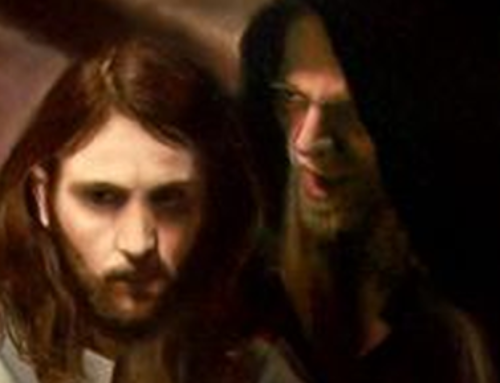Some years ago, Revd. Sam van Leer, who is now our Area Dean, shared a video clip with a funny cartoon about St. Patrick. Two Irish brothers ask St. Patrick to explain the Trinity to them in simple terms, because they don’t understand difficult theological language, or so they say. So St. Patrick tries several analogies to explain how God can be three Persons and yet remain One.
But the two brothers reject each explanation on the grounds that it is clearly heresy. Each time they are right. St. Patrick gets so fed up with this that he gives the difficult theological version after all. Then the brothers answer: “Why didn’t you say so in the first place?” They turn out to understand it much better than the simple, but incorrect, analogies.
As is so often the case with these kind of jokes, there is a large element of truth in this video clip. When it comes to religion, the simple explanations are often plain wrong. For instance, many a preacher will say that God is like water. It can exist in three forms: ice, which is solid frozen water, normal water, which is a liquid, and steam, which is a gas. The problem is that water can only exists in one of these three forms at any time, while God the Father, God the Son and God the Spirit exist all at once. God does not shape-shift from one form into the other. Another problem is that water cannot act by itself, while God created the universe and can save us. And so one analogy after the other will fail to explain God to us.
But how then, you will ask, is all this talk about the Trinity ever going to help us, if the only good explanation is a very complicated one? Is the Trinity only a kind of game for theologians and a way to challenge and test preachers? Is the Trinity no more than a nice name for church buildings and female actresses in films like The Matrix?
Sense and nonsense of images

Trinity knot in my tie. Took me more than half an hour, but it worked!
Well, let’s go back to what God said about worship. First of all, in the Ten Commandments we are told not to make images of God and worship them. I believe that the point is not so much that the images themselves are evil, for we make mental pictures all the time, and we cannot do without them. We also have to make them of the invisible world, or we could not think about anything that is invisible or abstract. For instance, we think of electricity as of little balls racing though a wire.
The point is that pictures are OK, but we must never worship them as if they were God. God is always more than our thoughts about God. Neither are God’s thoughts ours, the Bible says. Whenever we think that we have captured God in a nice system or formula or creed or liturgy or have enlisted God as the champion of a particular cause or interest, we are in for a surprise.
I am currently reading a book called “The God of surprises” which is very refreshing, because it counters some of our prejudices and presuppositions about God. So God is not the same as the image we have of God. This is a very important point to remember! A failure to make this distinction has been the cause of all religious intolerance and persecution and wars and terrorism and much other injustice.
Now, when we are talking about the Trinity, we are really talking about our ideas about God. They may be very good ideas, even inspired ones and central to Christianity, but they are nevertheless ideas, descriptions, images, and not God. So when we try to explain the Trinity, we are really explaining the thoughts of the church about God. But what we are trying to do and should do, is to communicate something about God and not about our ideas about God. But is that not a contradiction and therefore impossible?
Trinity as a Creed
Perhaps it is easier than we think. What if we would look at the Trinity as a creed in itself, the shortest possible Christian creed, shorter than the Nicene Creed? It tells us two really important and practical things about God:
- First of all, the word Trinity confesses that God was revealed in Jesus Christ. What it says is that if you really want to know God, you must look at Jesus Christ. He revealed the Father to us. And therefore there is no real difference between the God of Abraham, Isaac, Ishmael and Jacob and the Messiah. Christ himself proclaimed in John 14:9, “Anyone who has seen me has seen the Father”. Colossians 2:9 says, “For in him all the fullness of deity lives in bodily form”. Christ is the fulfilment of the prophecy that God would dwell among us. John 1:14, “And the Word was made flesh and dwelt among us”. The word for “dwell” is really “to pitch ones tent”. It is related to our word “tabernacle”. So what the term Trinity is saying, is that God is a God who is with us, “Immanuel”.
- Secondly, this one word, “Trinity”, proclaims that the dwelling of God, God’s incarnation, did not end with God’s presence in Jesus Christ. God’s presence continued after Christ’s ascension, by means of what we call the Holy Spirit. And again this means that God is dwelling among us, this time even within us. Most other religions, even the ones that have the notion of a trinity, teach that the gods are outside us, far away, and not really One. One of the unique teachings of Christianity is that God can work within us. Of course it does not mean that we are always right, simply because the Holy Spirit lives in us. We can still be disconnected from God, so we should pay attention both to God’s word and to that inner voice which is the Holy Spirit.
Practical implications
So what are the practical implications of this? How can this view of the Trinity make a difference in our daily life? Well, first of all we don’t have to defend it, when people attack what seems to be a strange faith in three Gods. We can simply admit that the Word Trinity is not found in the Bible and that it is simply an aid to help us to remember the three most important things about God, creation, salvation and transformation.
But most importantly, it will make our life much more peaceful, knowing that the three faces of God are really one. When God speaks to us through Christ, He is not a different God from the God of Abraham, Isaac, Ismael and Jacob. When we receive forgiveness and acceptance, we don’t have to constantly look over our shoulder, whether there is suddenly another part of God that doesn’t agree and is about to punish us instead.

Jesus as Trinity
The people who made this drawing, understood that God cannot have different faces, so they made them all the same. It gave a strange idea of God. In fact it was even worse. In order for Jesus and the Holy Spirit to be considered fully divine, it was thought necessary that both of them had the whole Trinity within them. If we are not careful, this would lead us to 9 faces or 9 gods!
I wonder why God needs three or more faces if they are all the same! The answer is that God doesn’t! God is no different from the One Christ revealed and embodied. Neither does the Holy Spirit represent something entirely different. According to Christ, the Spirit of Truth would take what belongs to Christ and declare it. Christ adds that all that the Father has, is His. So there is only one God and one truth, and if there are any differences, they only exists in our minds, in our imperfect understanding of God. The whole point of the Holy Spirit is then, to increase our understanding, to better grasp eternal truths, by helping us to experience and share the love of God. In our second reading we heard the apostle Paul say, “God’s love has been poured into our hearts through the Holy Spirit”.
Reliable love
So, God has only one face. It is the face of love. God lovingly created us, lovingly saved us and wants us to love each other. Often, in order to love, we must first know, that is experience, love. So that is precisely what God did in Jesus Christ. He came close, took our flesh, walked alongside us, and shared our suffering. And that is what God still does today. A little bit like that one policeman in Belgium, who was given the task of befriending less privileged young people in the streets. They loved him and when one boy found out that he was a policeman, he laughed, as if to say, you must be joking! A friendly chatting policeman? a merciful judge? a compassionate leader? a peaceful warrior? Would the creator God, the mighty Lord of hosts, be like Jesus Christ? You must be kidding! And yet God is Christ. They are One. And they are our best Friend ever.
Summary and call to action
The trinity reveals one of the most powerful aspects of God: the ability to interact in a meaningful way with simple creatures like us. Just compare this to the way we sometimes deal with the less privileged, with the animal world, with nature as a whole and even with our equals. We don’t ask what they need. We often just take what we desire and leave others to fend for themselves. Most people still don’t realize that ultimately we cannot be happy unless “the others” are too. So don’t say the Trinity is only about unity and concord (among a group of people who roughly share the same traditions). It is about embracing the whole creation, and particularly the suffering, the less fortunate, the lost and the meek.
God has made a solid start. All three Persons of the Trinity have visited this world (remember God walking in the Garden of Eden?) and they are still present with us. Where do we continue? As St. Paul said in Romans 5, we may boast in our hope of sharing the glory of God. If God’s glory is shared with us, with whom do we share our glory, our wealth, our talents, our compassion, our time, our affection and peace? Amen.





Leave A Comment